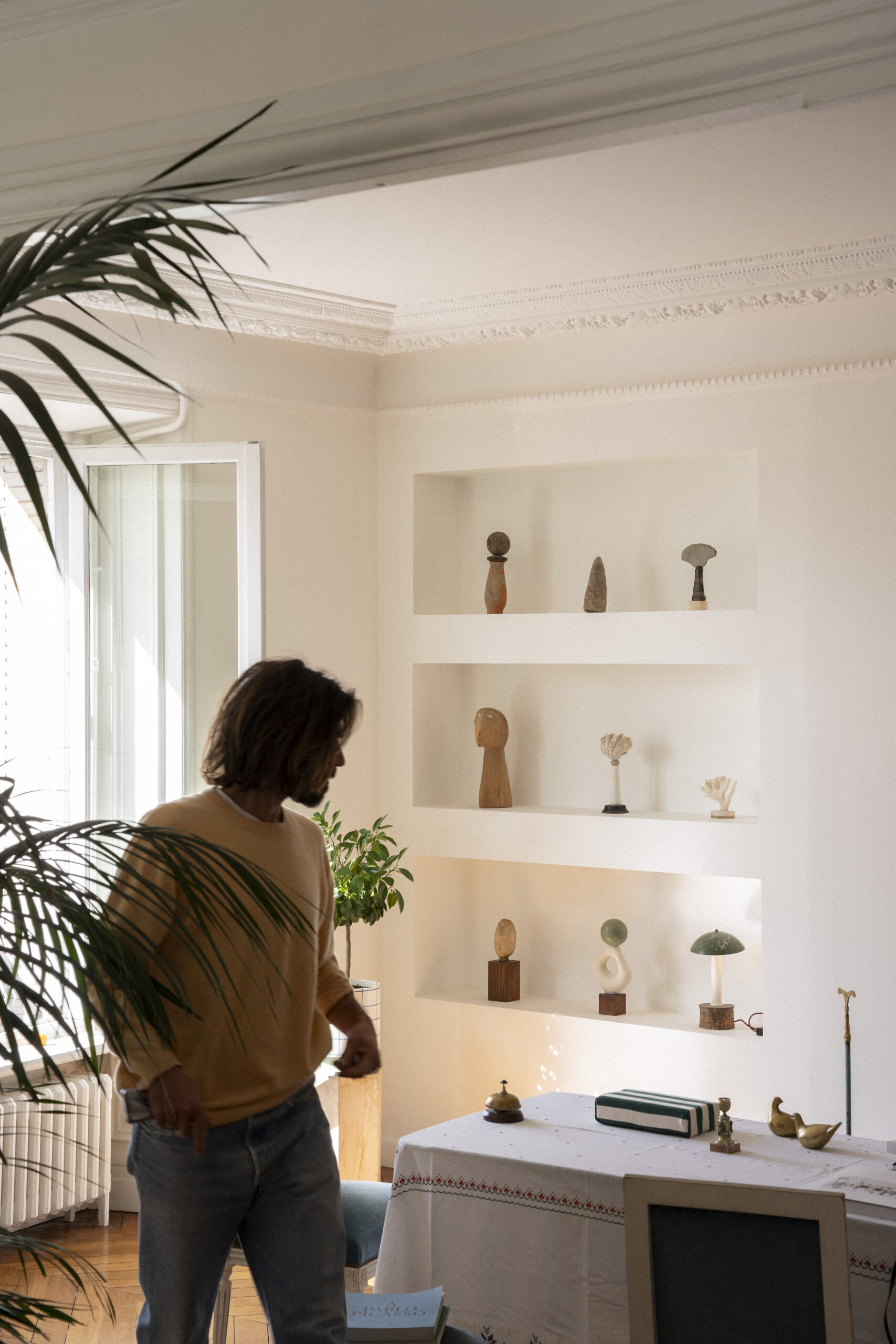A large porcelain teapot from Sarreguemines with white and blue stripes, two cups sourced at the local flea market, soothing notes of jazz music, and an open window overlooking the Seine. In this setting, Nicolas Lefebvre (Hauts-de-Seine, 1982) welcomes me for an afternoon tea in the beautiful living room of his Parisian home-studio.
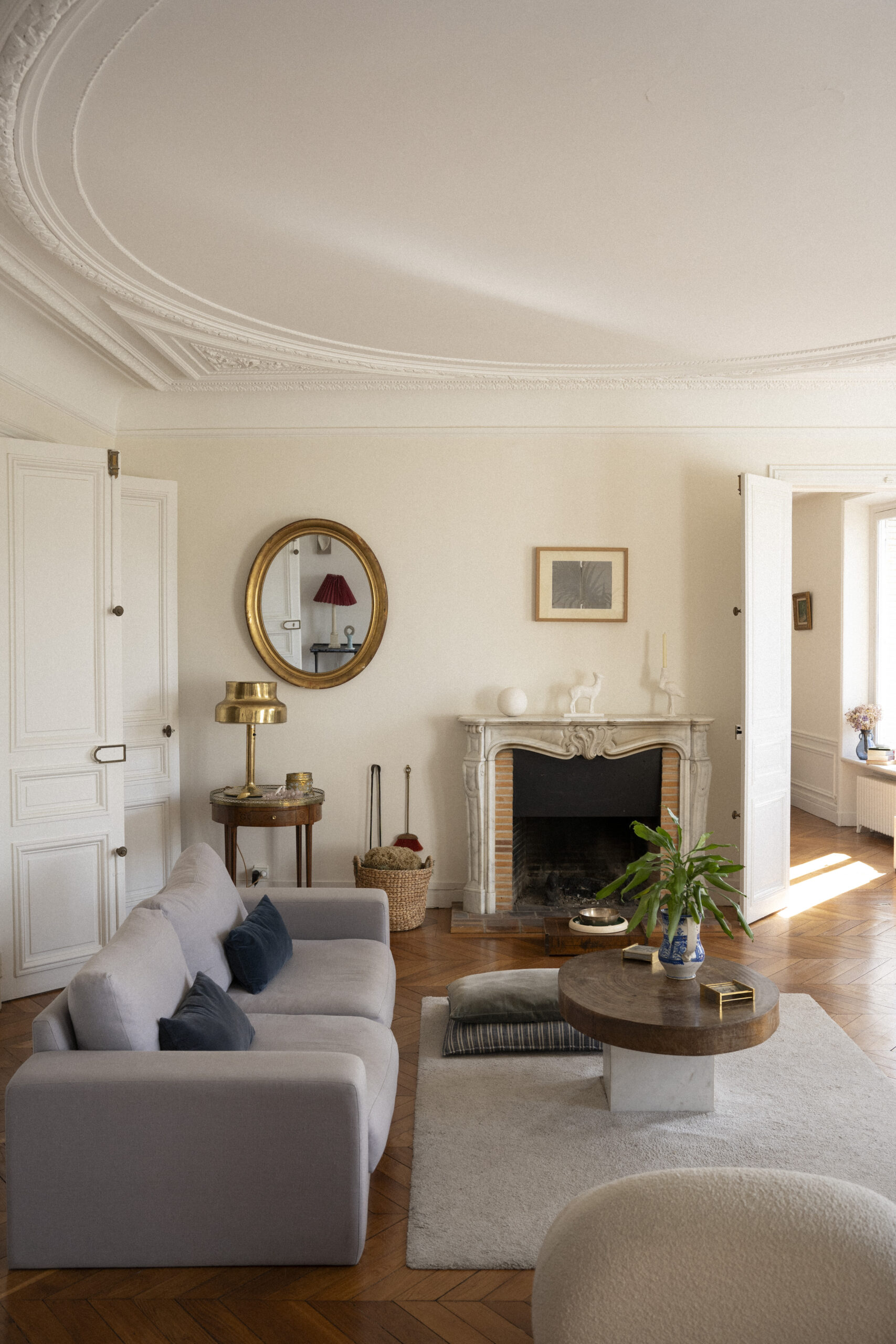
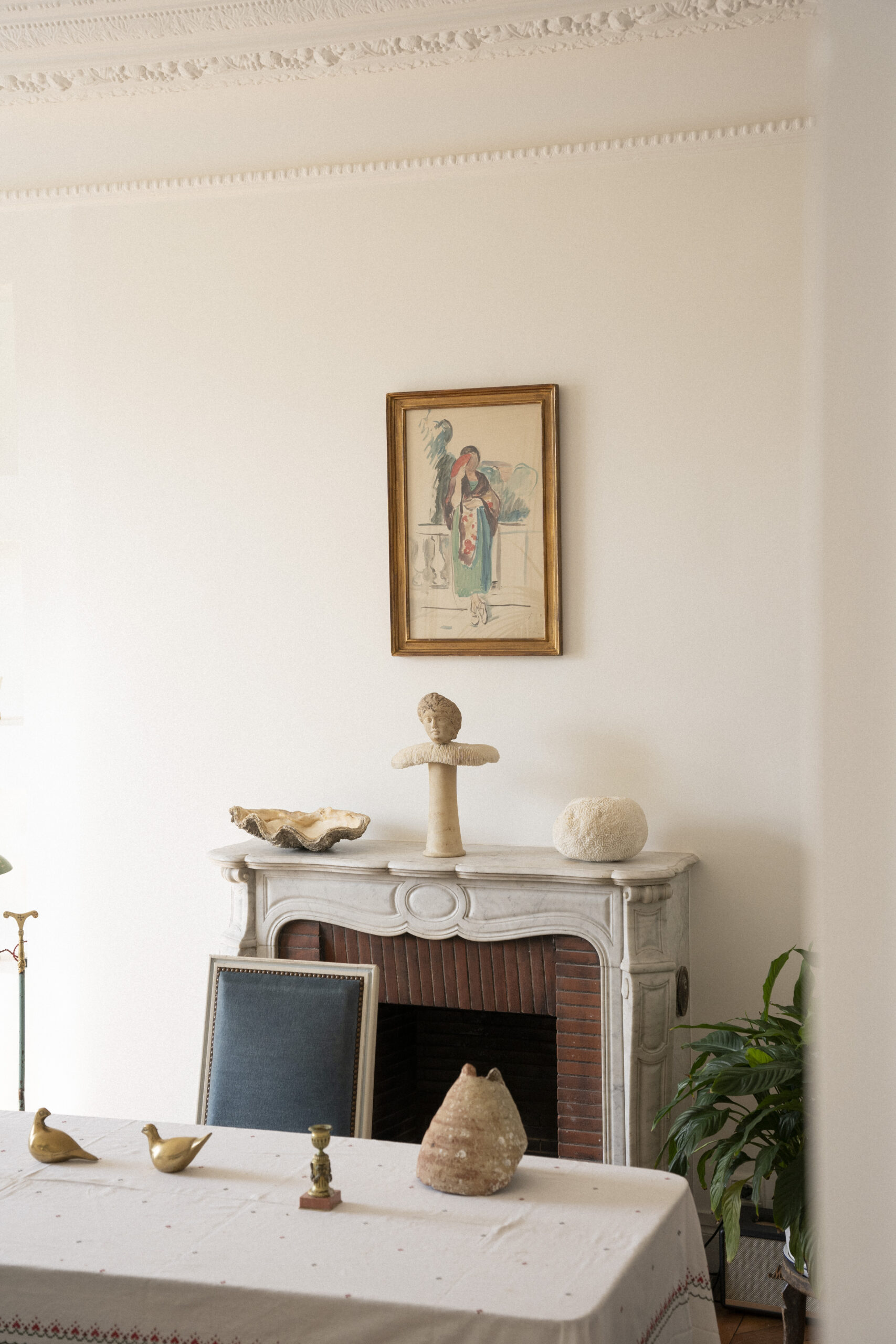
Every element here is arranged with extraordinary refinement, balance and a sense of beauty that captivates the eye in every corner: a pile of old and new books on the floor, a collection of objects from his trips, a library wall with his sculptures, a beautiful antique desk, a marble table. “Look at my new basketball hoop. I made it with an ivory bracelet I bought from Ethiopia. I added some 19th-century glass strands and a wooden piece of construction that I scavenged from down the street. Can you make a shot? I am asking everyone who comes to make one!”.
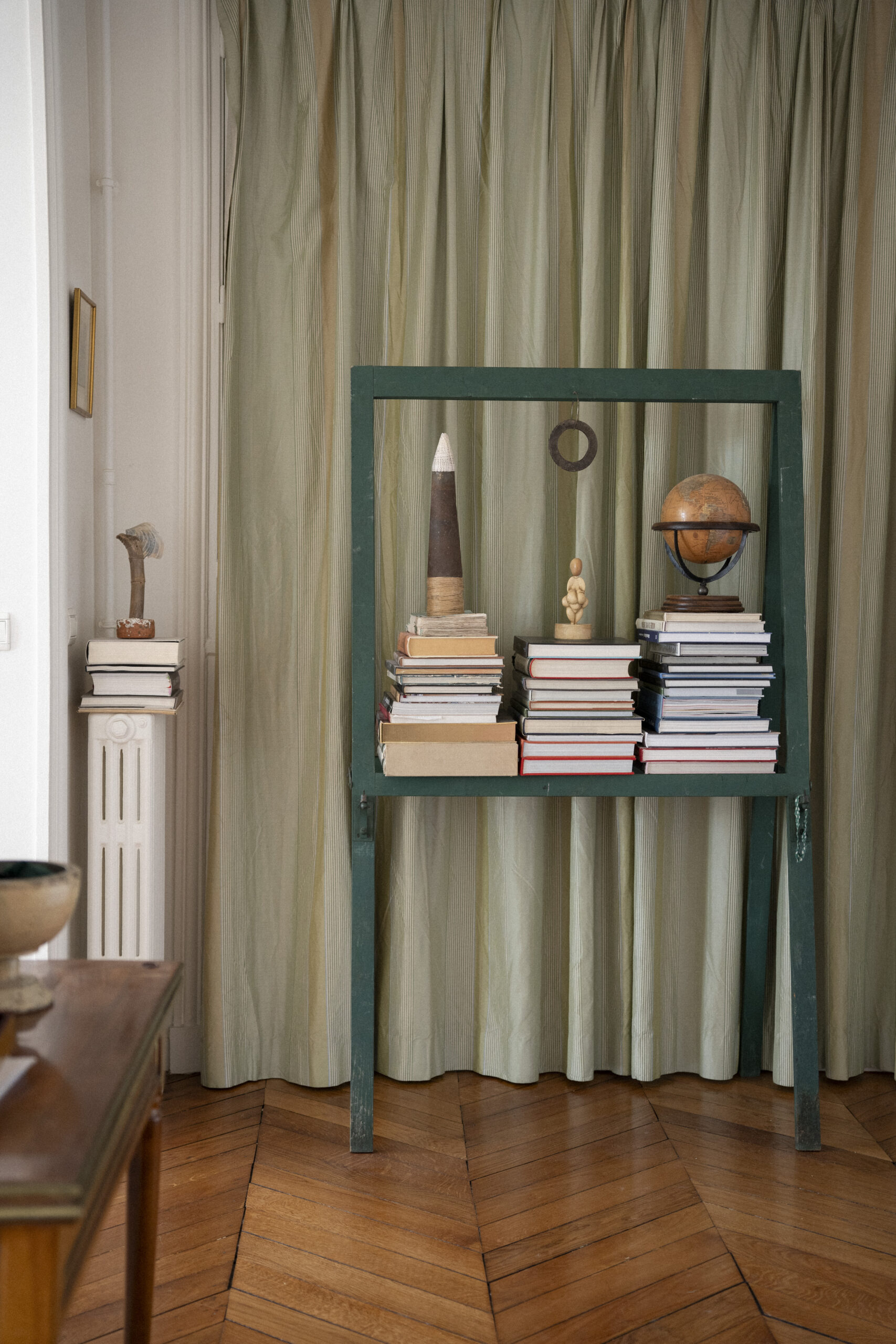
With this spirit of sharing, the French artist creates sculptures composed of found objects and different materials. They come from auctions, from the streets or from other improbable places. Each piece tells an intrinsic story, which Nicolas combines into a single composition, following the technique called assemblage. In doing so, he weaves together cultures, historical epochs, and people of different ages and social backgrounds.
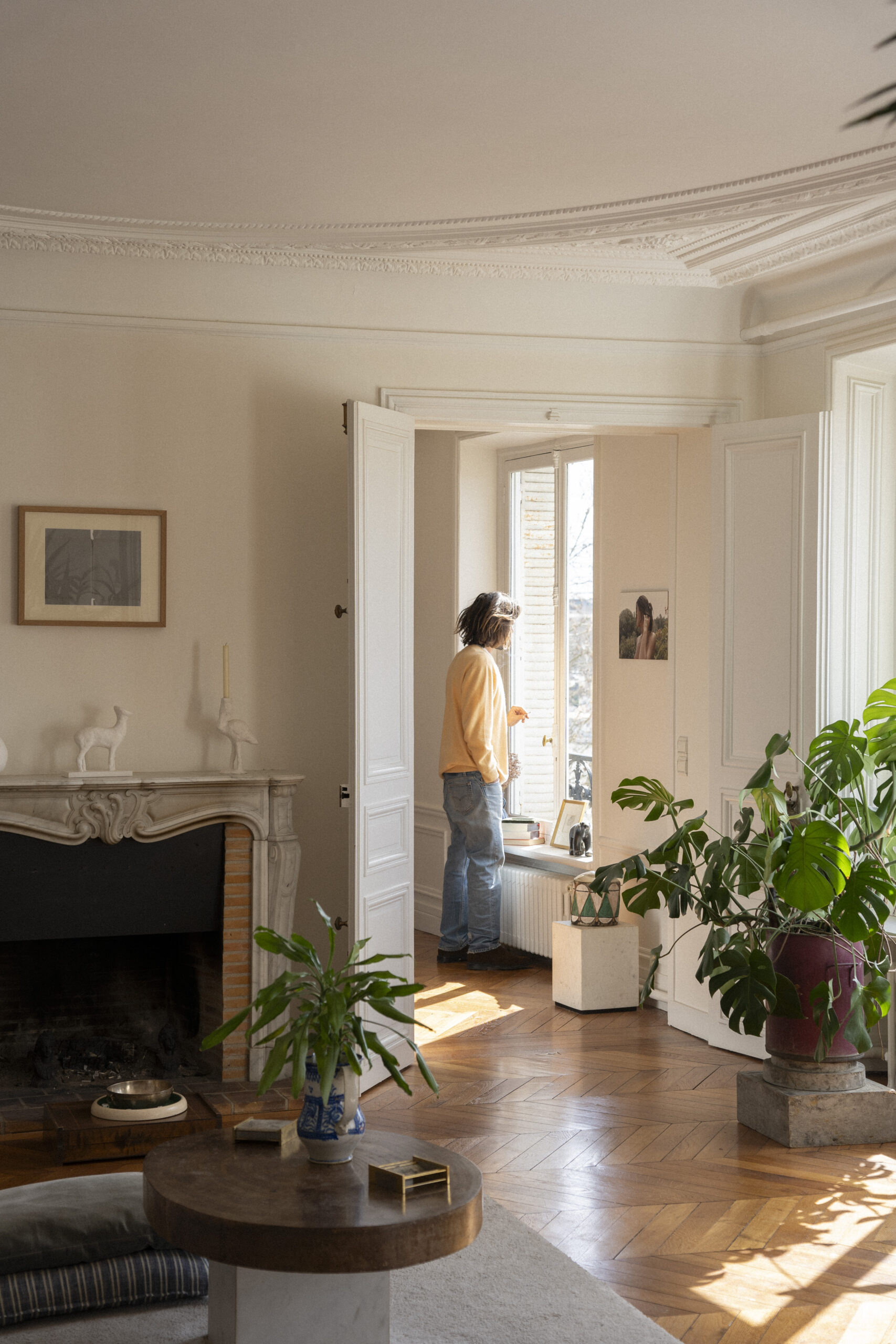
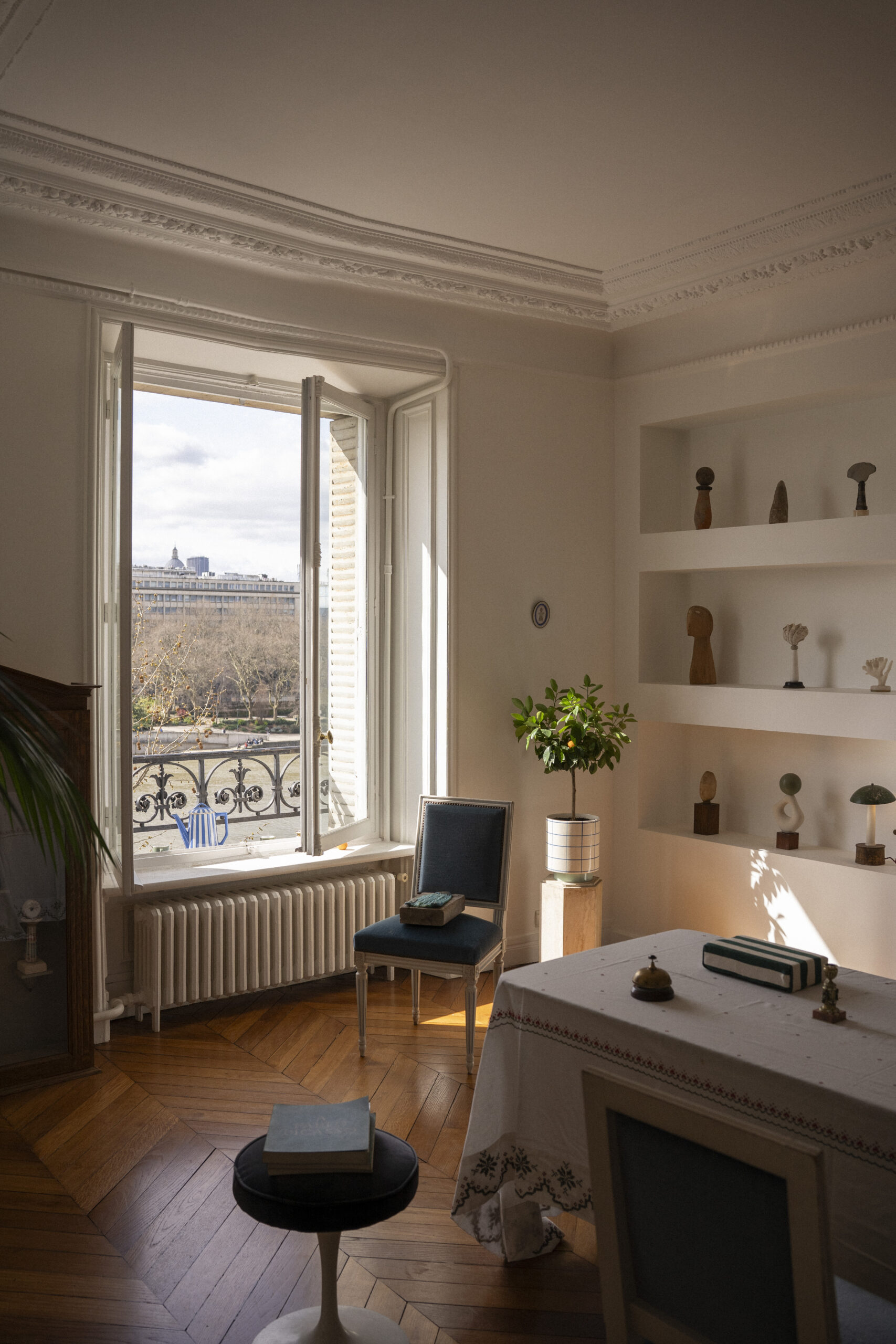
“My artistic journey traces back to my early travels, during which I developed a deep admiration for locally handcrafted objects. I began my career in the artworld under the guidance of art dealer Jacques Lacoste, who led me on research expeditions to Peru and that’s how I connected with primitive arts. I started to collect antique artifacts myself and scour the streets of Africa, Portugal, Italy, and France. My travels are a constant source of discovery and immersion in new worlds. It’s from them that I draw inspiration to create” Nicolas explains. “In my workshop downstairs, I accumulate objects that I know I’ll be using at some point. Each object has its own heritage but when I put them together, they take a new life and become unique pieces. I have organic fibers from India, relics, bones, marine fossils, chunks of wood from Africa, as well as bamboo, alabaster, feathers, mother-of-pearl… the list is endless. I like creating little sculptures, but my art has also evolved on a monumental scale, including site-specific installations and scenography”. In Nicolas Lefebvre’s enchanting universe, anything is possible.
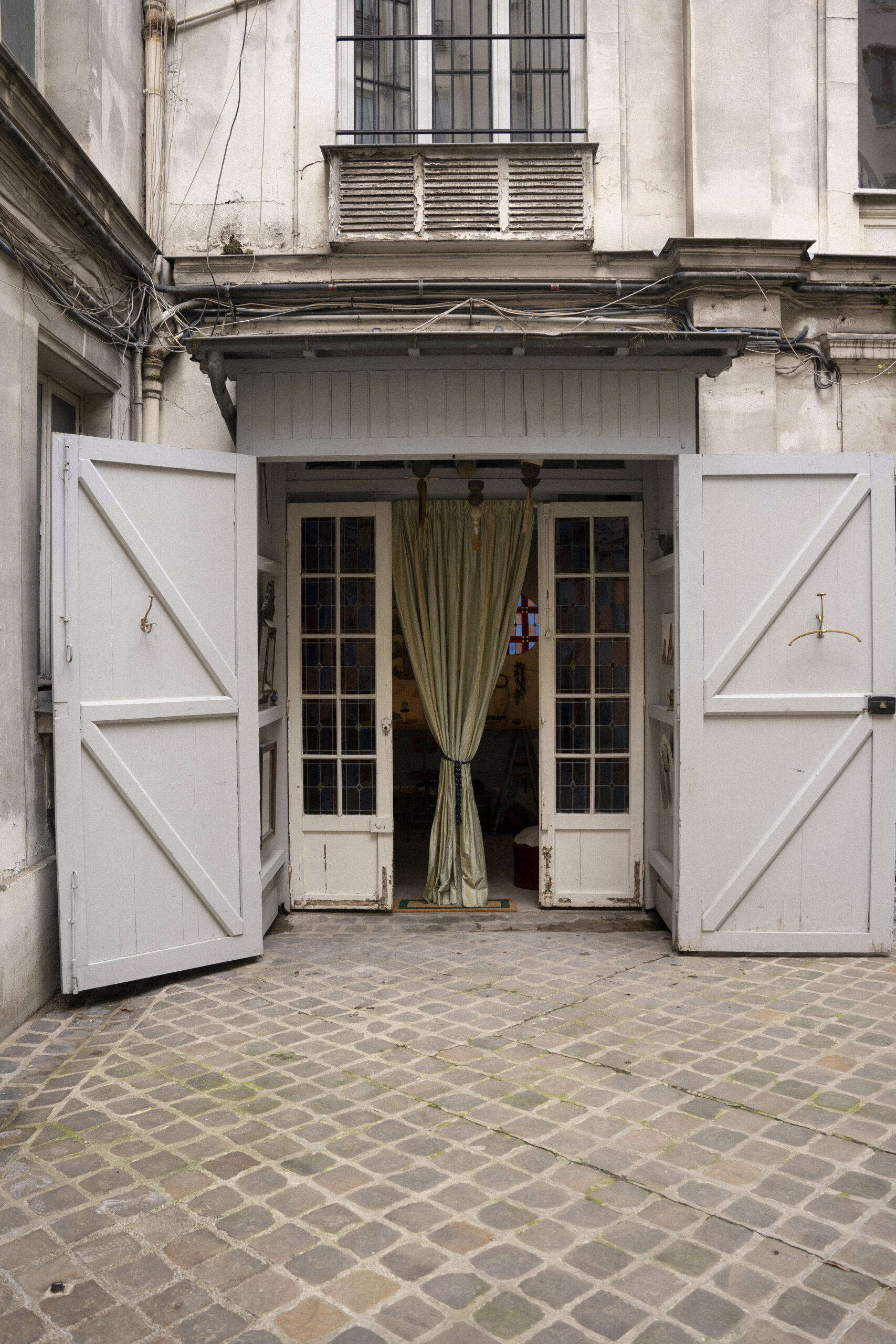
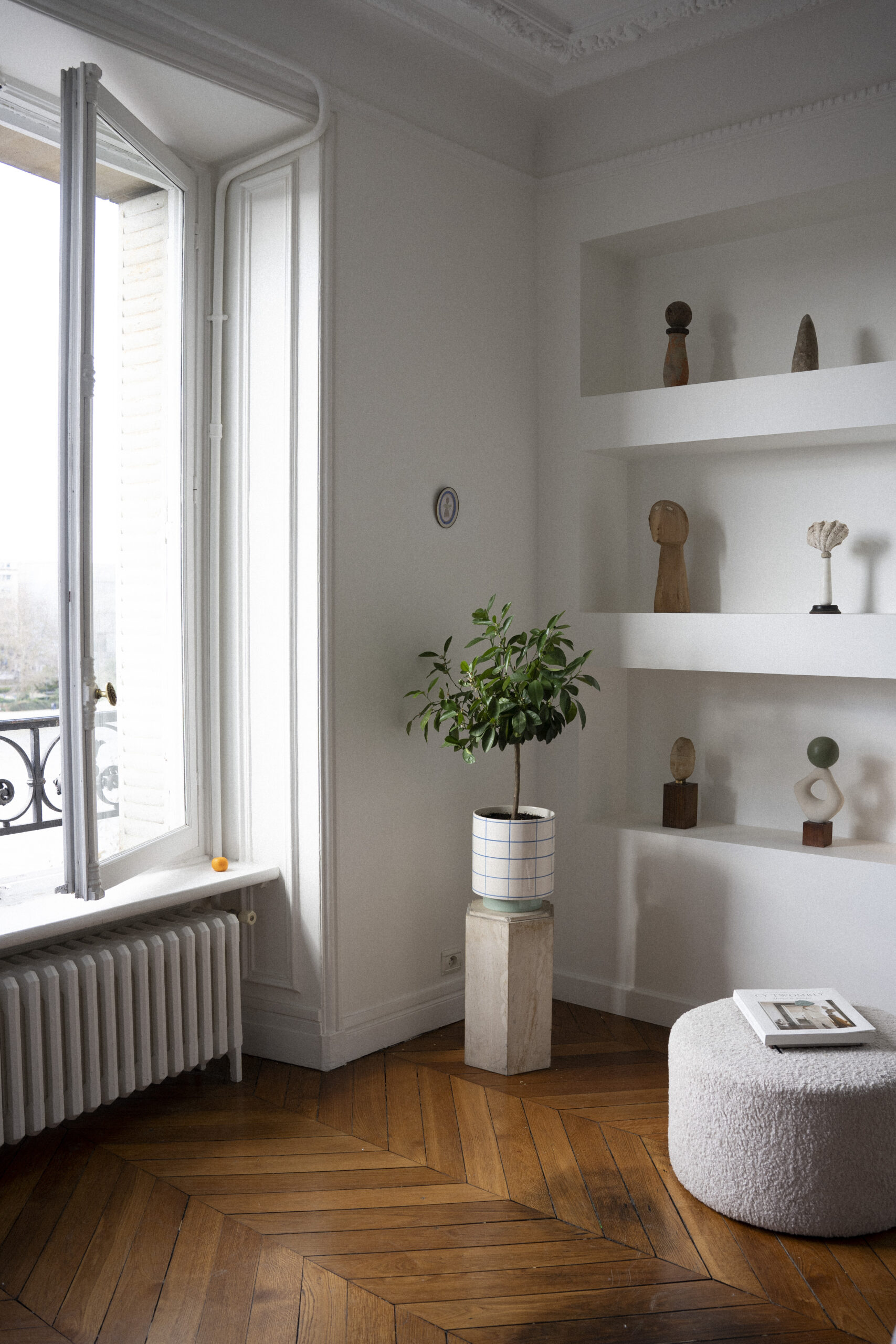

He takes two handles from an old Hermès bag and attaches them to a big market sign, then hand-paints the entire piece, transforming it into an oversized breakfast tray. “Isn’t it gorgeous?” he asks amused. “I have also combined the foot of a Roman statue with a tree trunk and a seashell, I was thinking of a holy water font”. His apartment is filled with these precious creations emerging as small, sacred surprises from walls, tables, desks, pedestals, nooks, and hidden corners. A harmony envelops the space — an alchemy of art, lifestyle, and interior — achieved effortlessly. “This combination is entirely natural to me; it represents a genuine extension of myself. From the way I dress to how I live and work, it’s a true manifestation of my personality. My art is the complete embodiment of who I am.”
One can sense immediately how the house is important to him both for spending good time with the natural sunlight entering in and for working. He receives his friends a lot for gatherings, inviting their perspectives and making them integral to his creative process. ““I love inviting my friends over. I host them for lunch or dinners here or at my vacation home. They observe my new works, I ask them what they think and this way, they participate in my work. Yesterday I asked the concierge to come up and look at my new sculpture and see if she thought it was better to add marble or a piece of wood to it.
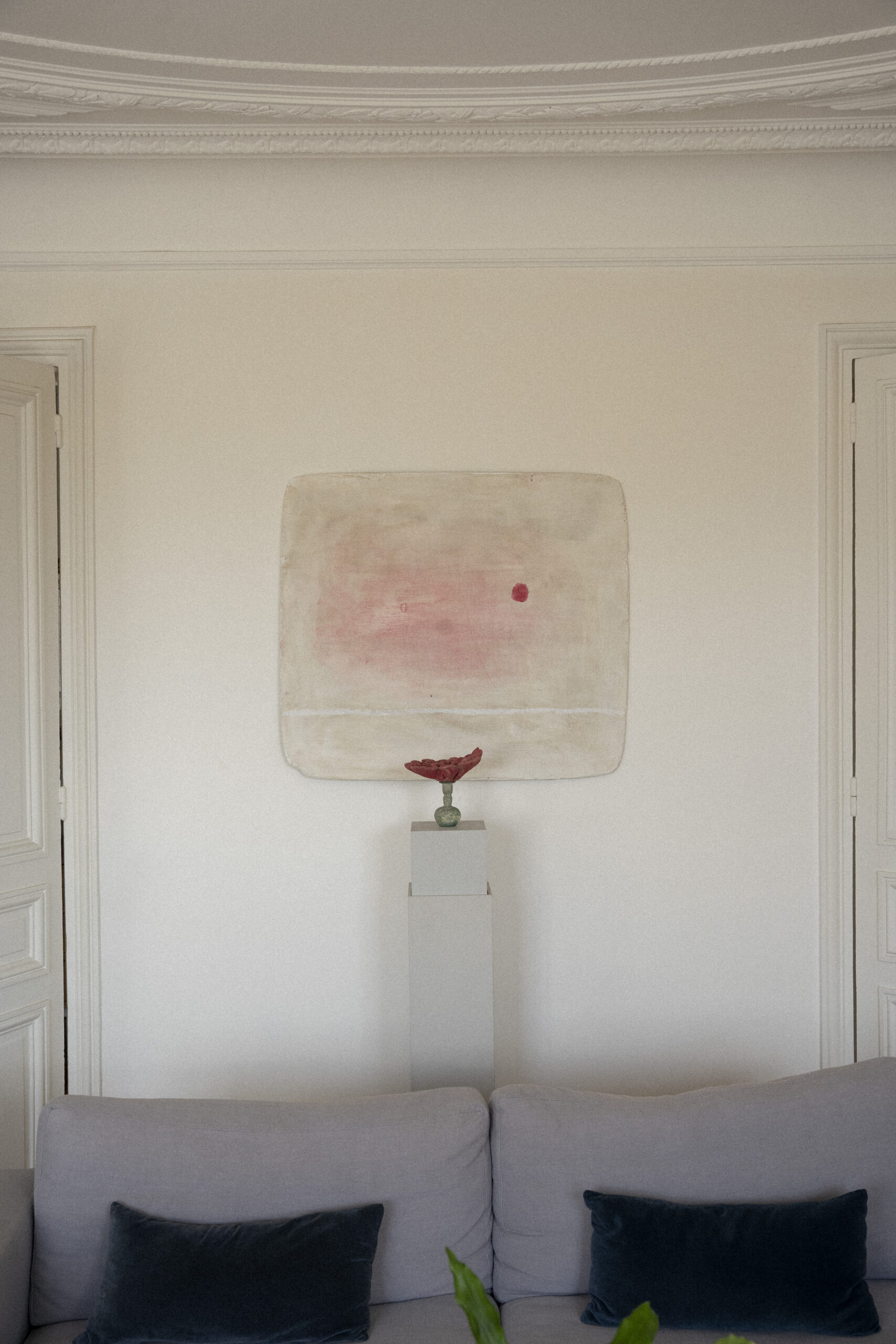
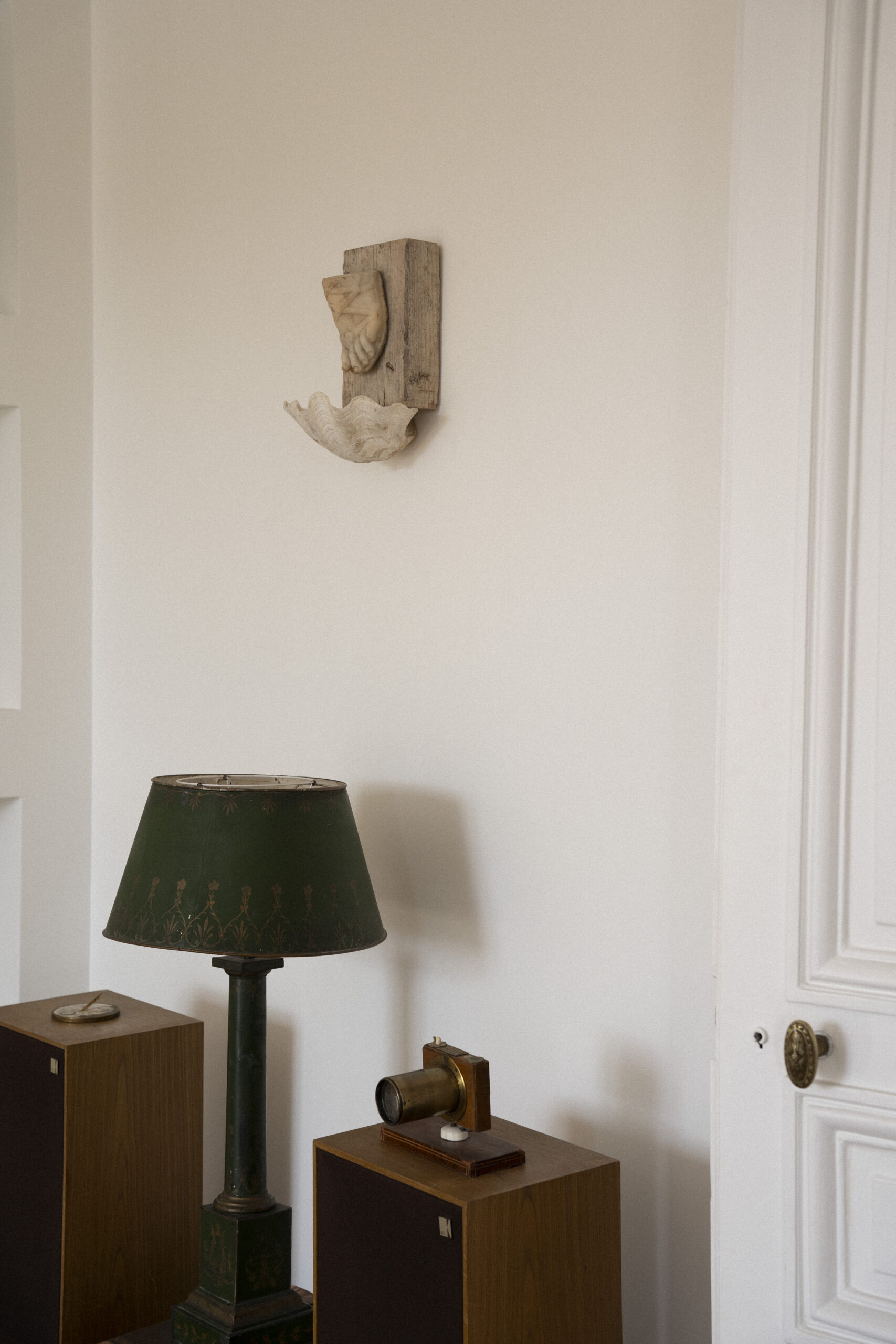
Nicolas’ desire to open the doors of creativity to everyone, especially the younger generations, reveals a profound commitment to democratizing the art experience. It reflects not just his generosity and determination but the depth of emotions he invests in every piece. “I am not only addressing art experts or a privileged audience but anyone, particularly the young generation. I want my works to be accessible to all, as they reflect our cultural roots. There is something ancestral hidden within them that connects each of us. I call it collective memory. This shared memory resonates with everyone, granting me the freedom to create without the necessity of knowing the origin or reason behind my ideas. I believe this will be the title of my upcoming book, which illustrates my twenty years of creation.” With an insatiable passion for discovery and a constant search for new forms of expression, the artist inspires and surprises, demonstrating that the power of imagination knows no limits.
